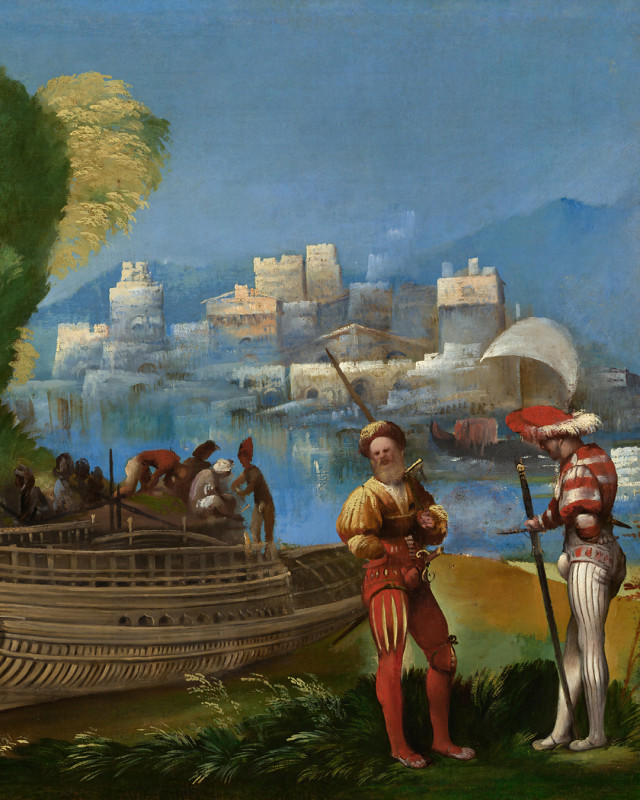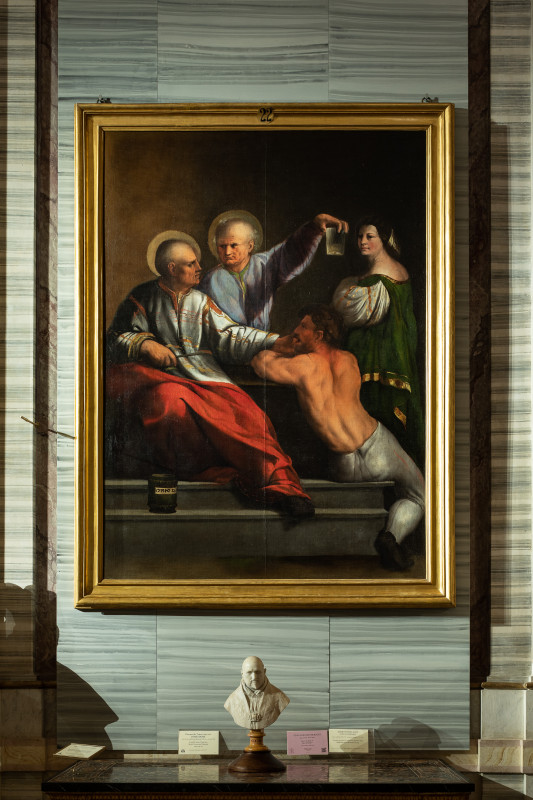Dosso Dossi. The Aeneas Frieze

From April 4 to June 11, 2023, the Galleria Borghese brings to fruition its research on landscape painting and the relationship between Art and Nature with Dosso Dossi. The Aeneas Frieze, a never-before-seen exhibition – the first dedicated to the great Ferrarese master’s pictorial cycle-curated by Marina Minozzi.
For the first time, five of the ten canvases that made up the frieze created by Dosso Dossi between 1518 and 1520 for the Camerino d’Alabastro of Duke Alfonso I d’Este in Ferrara are being brought together in a single location. The operation, also prompted by enthusiasm for the recent reappearance of some of these paintings, is the result of an ambitious collaboration with the Louvre Abu Dhabi, the National Gallery of Art in Washington, D.C., and the Museo del Prado in Madrid.
The Frieze, of which only seven canvases have been found to date, was made by Dosso Dossi drawing inspiration from specific episodes of the Virgilian poem taken from the first, third, fifth and sixth books, leaving out, however, the part devoted to the hero’s love story with Dido, that of the wars in Italy and the founding of Rome.
Commissioned by Alfonso I for his dressing room of paintings, where events of Bacchus and Venus (mother of Aeneas) are mixed with the exaltation of temperance in rulers and the celebration of those dedicated to founding cities, the cycle is linked in complex and differently interpreted ways to other paintings then present by Bellini, Titian, and Dosso himself.
On display, next to Journey to the Underworld from Book VI, belonging to a private collection, The Cretan Plague from Book III and Arrival of the Trojans on the Libyan Coast and the Sicilian Games in Memory of Anchises from Book V from the Louvre Abu Dhabi, Arrival of the Trojans at the Strophades Islands and Attack by the Harpies from Book III from the Prado Museum in Madrid, The Repair of the Trojan Ships and Foundation of a City in Sicily, originally a single canvas, from Book V from the National Gallery of Art in Washington, D.C.
These canvases, in which Dosso’s fantastical and imaginative vein is enhanced by stories from ancient poetry, are characterized by vibrant colors, fascinating eccentricity, and original compositions, making them a brilliant example of the artist’s creativity, and of the 16th-century Ferrara artistic milieu that acquired new vitality in the great Baroque season.
The Aeneas Frieze arrived in the collection of Scipione Borghese in 1608 to remain documented there until the end of 18th century and was purchased by the painter and director of the Prado Josè de Madrazo (1781-1859) probably during his stay in Rome (1803-1819); it is de Madrazo himself, in the 1856 catalogue of his collection, who describes the pictorial cycle as the one that ran above Titian’s The Bacchanalia in the painting room of the Ferrara Castle.
For Scipione – who, in addition to also owning Federico Barocci‘s painting Aeneas Fleeing Troy, commissioned Gian Lorenzo Bernini in 1618 to create his first sculptural group, Aeneas, Anchises and Ascanius – the story of Aeneas as the founder of Rome and a new empire had a profound significance, linked to the existence of the papacy and its relationship with the city. The frieze, purified by the author of the negative effects of love passion and war, offers Aeneas in his most positive sense: hero and man embodying Roman pietas, who had transformed the pain of exile into an enterprise that would rewrite his destiny and that of the world.
In Dosso Dossi’s paintings there is a kind of universal landscape, a sampling of elements: the coasts, the sea, the hills, the cities under construction, the hellish landscape, which Aeneas observes as he descends into the otherworld. At the same time, the hero traveling to the founding of a new homeland underscores the centrality of Rome, in the 16th and 17th centuries, for European artists.
With this exhibition, in fact, the Galleria Borghese concludes the path undertaken in 2021, dedicated to landscape, to open a new strand of research dedicated to travel and the gaze of foreign artists on Italy.



